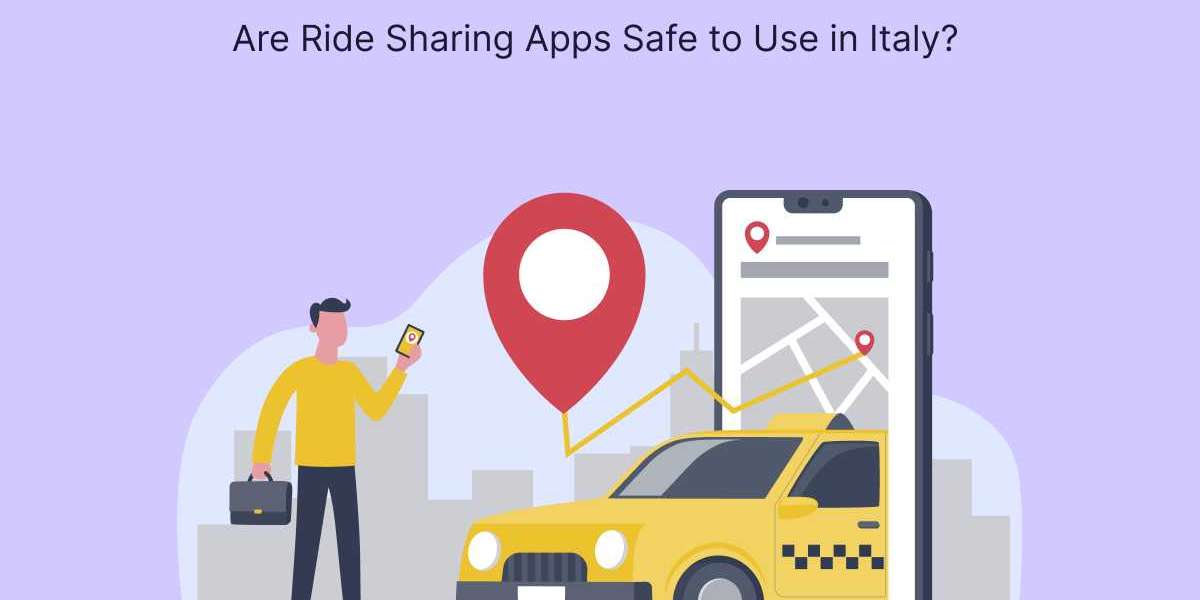Ride-sharing apps have revolutionized the way we travel, providing affordable and convenient alternatives to traditional taxi in rome and public transport. As these apps gain popularity worldwide, travelers often wonder whether they can rely on them for safe transport in foreign countries, particularly in destinations like Italy. Known for its rich history, art, and picturesque landscapes, Italy is a dream travel destination, but is it safe to use ride-sharing apps while exploring this beautiful country? Here’s an in-depth look at the safety of ride-sharing services in Italy.
1. Regulation and Legislation
In Italy, ride-sharing services like Uber, Free Now, and ItTaxi are subject to regulations and oversight, ensuring a certain level of safety for both passengers and drivers. In major cities like Rome, Milan, and Florence, ride-sharing services are legally allowed to operate, though the rules can vary by region. For example, in some parts of Italy, such as Rome, Uber only offers the Uber Black service (premium cars with professional drivers), as opposed to the regular UberX found in other cities.
In addition to ride-sharing regulations, Italian authorities enforce strict rules for drivers, including background checks, driving history evaluations, and specific vehicle inspections. These regulations are in place to ensure that drivers meet safety standards. However, it’s essential to be aware that not all Italian cities have adopted the same level of regulation, so it’s wise to research the local laws when traveling to different regions of Italy.
2. Driver and Vehicle Safety Standards
Most ride-sharing services in Italy adhere to industry standards for driver and vehicle safety. To be eligible to drive for ride-sharing platforms, drivers must undergo a background check, which typically includes criminal record checks and driving history evaluations. In Italy, this process ensures that drivers have a clean record and are qualified to drive safely. Additionally, many ride-sharing companies in Italy require drivers to have specific types of vehicles that meet safety requirements, such as having four doors, functional airbags, and regular maintenance checks.
Some ride-sharing platforms, such as Uber in Italy, also offer options like Uber Black or Uber Lux, which ensure higher safety standards by requiring professional drivers who have undergone additional training and own high-end, well-maintained vehicles.
Furthermore, passengers can track their rides in real-time through the app, which adds an extra layer of safety by allowing them to monitor the route. Most apps also include features that share the trip details with friends or family, so someone else can track your ride. This transparency adds another level of safety, especially for solo travelers or those unfamiliar with the city.
3. Insurance and Liability Coverage
Insurance is another crucial factor when considering the safety of ride-sharing services in Italy. In the event of an accident or an unfortunate incident, ride-sharing companies in Italy are required to provide liability coverage. This coverage ensures that both drivers and passengers are protected in case of injuries or damages.
Ride-sharing platforms like Uber in Italy provide both driver and passenger insurance coverage, which includes third-party liability insurance and personal injury protection. This means that if an accident occurs during a ride, both the passenger and the driver are covered under the service's insurance policy, ensuring that passengers are financially protected in the event of an emergency.
However, it’s important to note that insurance coverage varies from one ride-sharing app to another, so it’s recommended to check the details provided by the app you are using before booking a ride.
4. Safety Features in Ride-Sharing Apps
Modern ride-sharing apps come equipped with a variety of built-in safety features designed to protect both passengers and drivers. Here are some features that enhance safety when using ride-sharing apps in Italy:
- Real-time Trip Tracking: Most apps offer real-time tracking of your trip, allowing you and your loved ones to monitor your journey. This feature ensures that help can be dispatched in case something goes wrong.
- Driver Identification: Ride-sharing apps show the driver’s name, photo, and vehicle details before the ride begins. This allows passengers to confirm they are getting into the right vehicle.
- Rating and Reviews: After each ride, passengers can rate their experience and provide feedback. This feature promotes accountability and helps maintain the quality and safety of the service.
- Emergency Button: Some ride-sharing platforms, including Uber, have an emergency button in the app that connects passengers to local authorities in case of an emergency.
5. Safety Concerns and Precautions
While ride-sharing services in Italy generally maintain high standards of safety, travelers should still exercise caution, just as they would in any other country. Here are some general safety tips for using ride-sharing apps in Italy:
- Verify the Driver and Car Details: Before getting into the car, check that the driver’s name, photo, and vehicle details match the information provided in the app.
- Stay Inside Until the Car Arrives: For added security, wait for your ride inside a public place, especially at night. This minimizes the risk of being approached by unlicensed drivers.
- Share Your Ride Details: If you’re traveling alone, consider sharing your trip details with a friend or family member so they can track your journey.
- Trust Your Instincts: If something feels off or if you’re uncomfortable with the driver, cancel the ride and report the issue through the app. Your safety is the priority.
Conclusion
Ridesharing apps in Italy are generally safe to use, thanks to the stringent regulations, driver vetting processes, and built-in safety features. Whether you're in a large city like Rome or Milan, or visiting smaller towns, ride-sharing services like Uber, Free Now, and ItTaxi provide a convenient and secure way to travel. As long as you take the necessary precautions, such as verifying driver details and using in-app safety features, you can confidently rely on these services to navigate Italy’s beautiful streets with ease and peace of mind.








